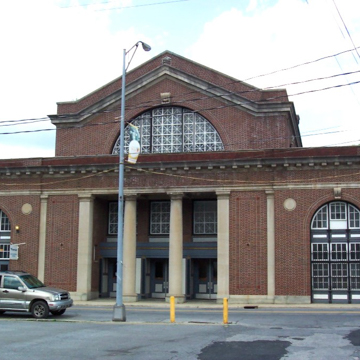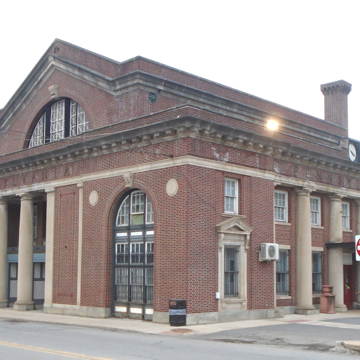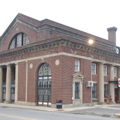In 1916, the Pennsylvania Railroad began a series of improvements at Johnstown, including elevating the right-of-way by several feet. This had to be accomplished without interruption to the more than two hundred trains that ran daily through the city. The construction also included this reddish brick passenger station designed by the Beaux-Arts-trained, New York City architect Kenneth M. Murchison (1872–1938). A flat-roofed one-story section surrounds the raised portion on all sides and provides a recessed entrance fronted with Tuscan columns and pilasters. The facade columns are echoed on the side elevations as engaged columns on the east elevation and pilaster strips on the west. Arched windows on all four elevations flood the two-story waiting room with light.
You are here
Walnut Street Station, Pennsylvania Railroad
If SAH Archipedia has been useful to you, please consider supporting it.
SAH Archipedia tells the story of the United States through its buildings, landscapes, and cities. This freely available resource empowers the public with authoritative knowledge that deepens their understanding and appreciation of the built environment. But the Society of Architectural Historians, which created SAH Archipedia with University of Virginia Press, needs your support to maintain the high-caliber research, writing, photography, cartography, editing, design, and programming that make SAH Archipedia a trusted online resource available to all who value the history of place, heritage tourism, and learning.


















